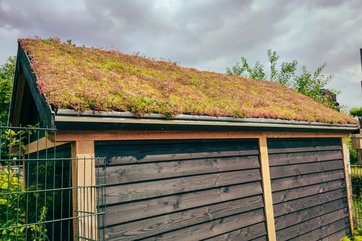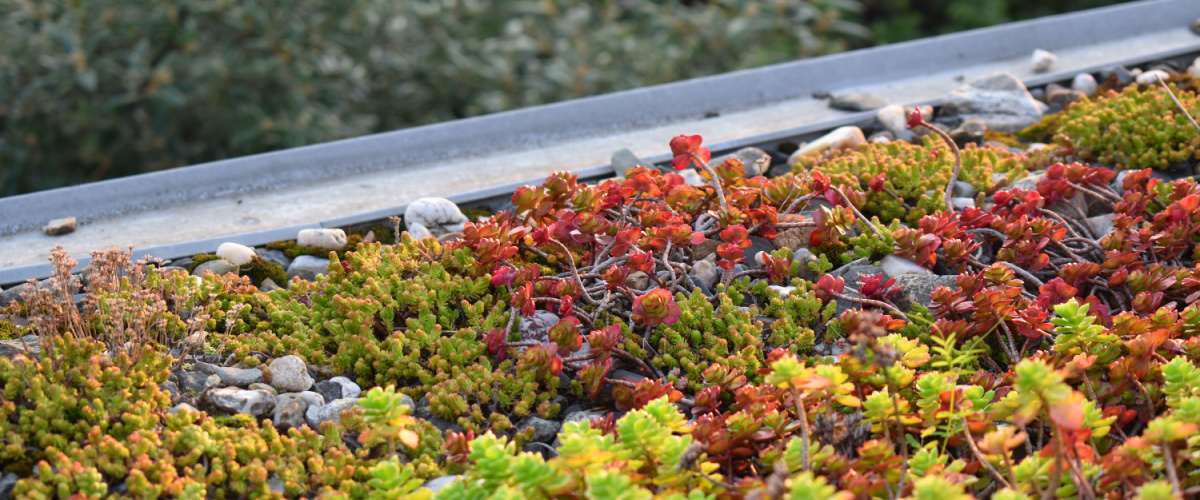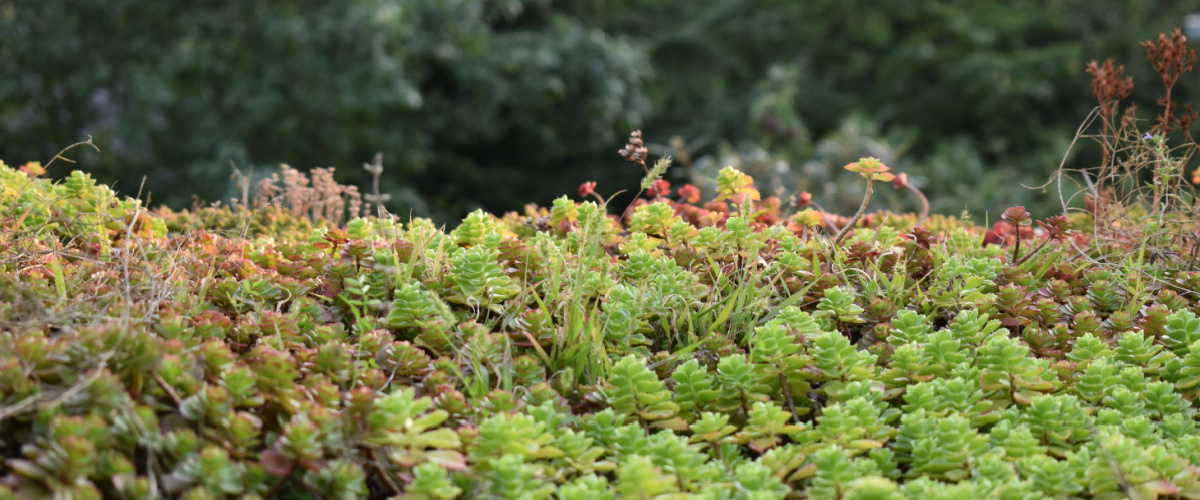
Want to improve the look of your shed while boosting the biodiversity of your garden? A green roof could be just what you’re after. A simple sedum matting on a shed roof is easy to fit and brings a host of benefits to the garden.
Essentially, a green roof is a roof covered with plants, which are planted in a growing medium laid over a waterproof membrane. As well as adding greenery to unloved areas of our gardens, such as bike shelters and sheds, green roofs absorb rainwater and are a great food source for pollinators. Green roofs on buildings such as houses, garages and offices need specialist design due to weight, waterproofing and drainage issues, but sedum matting uses low-growing, drought-tolerant succulents that need only a thin layer of growing medium, making them lightweight enough to be grown on garden sheds.

Although sedum green roofs are relatively lightweight, it’s a good idea to reinforce the roof before installation to ensure it can support the extra weight (the matting and growing medium both get heavier when wet). If you’re buying a new shed, choose one with a reinforced roof.
The slope of the roof should be between 1 and 5 degrees from the horizontal. If the roof is too flat, it won’t drain, and the plants may rot. If it’s too steep, rainwater will run off before the plants can absorb it.
Build a 3 cm deep tanalised timber frame to fit onto your shed roof. This will contain the growing medium and sedum matting. Attach the side and top panels to the roof with galvanised screws, but leave off the panel that will run along the lowest edge of the roof until after the waterproof membrane has been fitted.
Fit a waterproof membrane inside the frame, using a staple gun to attach it to the frame walls. At the lowest edge of the roof, allow the membrane to overlap the roof felting and fix the final frame panel on top of it. This will allow water to drain out underneath the frame.

Fit a layer of protective sedum fleece on top of the waterproof membrane to stop the sedum roots from damaging the roof.
Spread a 2 cm layer of the growing medium onto the fleece. For sedums, this should be a very light, free-draining, low-nutrient mix – you can find suitable growing media online.
Cut your sedum matting to size and lay it on top of the growing medium. As when laying turf, make sure the matting pieces are butted firmly together to stop the edges from drying out.
Water after installation, and keep on watering twice a week in dry weather until you see signs of new growth. Feed in spring and autumn and check periodically for weeds.
Are you looking for new ideas for your garden? Visit us today.
We would like to inform you about upcoming changes to our turf pricing, effective Saturday, March 1st, 2025. Below, you will find the revised
This is an opportune moment to plant your Root ball hedging. Root Balls are grown in fields and are typically larger, more mature plants,
We recently contributed plants to The Clubhouse Project, and we were thrilled to have received a card with photos showcasing the wonderful garden makeover
Recently, we had the opportunity to discuss growing methods and the transition to peat-free practices with Nick Westmarland, The Otter Nursery Manager. With 15
At The Otter Nursery, we are introducing safety improvements and kindly ask you to familiarise yourself with the updated guidelines before your next visit.
A big congratulations to Katerina Kantalis for achieving Gold at the Royal Horticultural Society Hampton Court Palace Garden Festival for ‘The Mediterraneo Garden’. All
The Otter Nursery
Murray Road
Ottershaw
Surrey
KT16 0HT